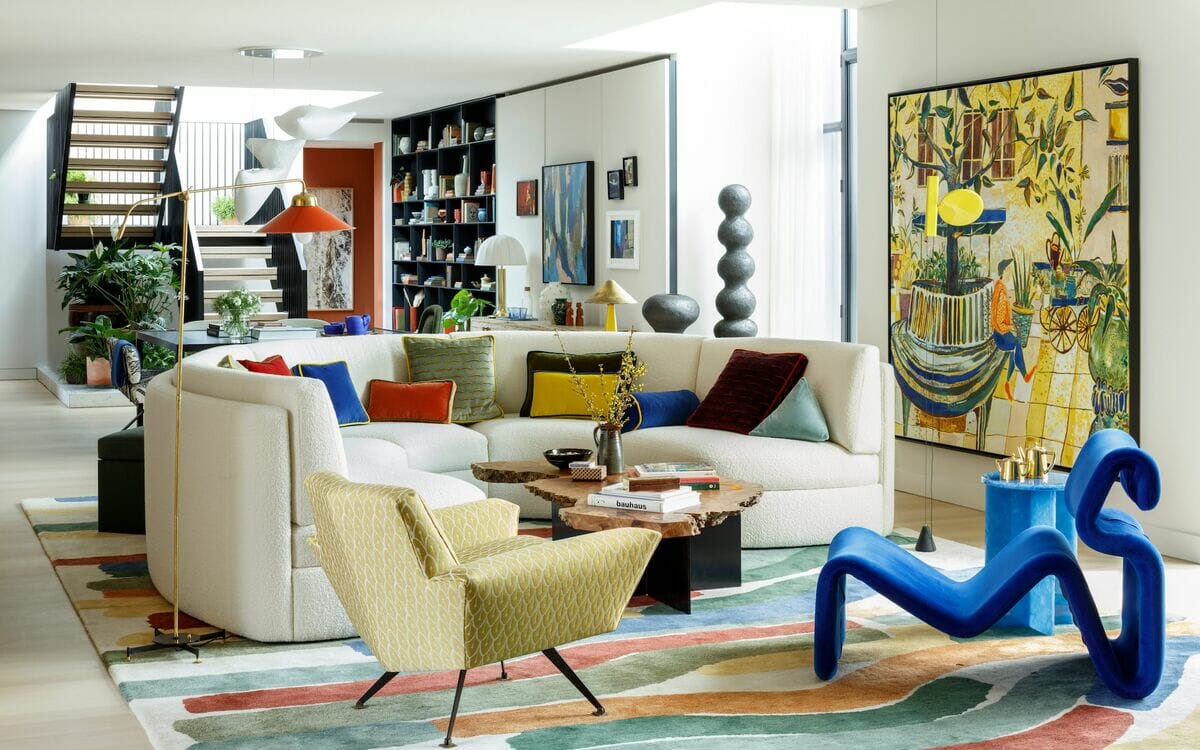Beyond the Surface: Latest Interior Design Trends
The “latest interior design trends” is not just about aesthetics; it’s about creating spaces that enhance well-being, promote sustainability, and reflect the evolving needs of modern living. It’s about finding a balance between functionality, comfort, and personal expression.
Note: This content focuses on the overarching themes and principles driving the current interior design trends, avoiding specific, easily replicated design elements that could lead to plagiarism. It encourages a deeper understanding of the “why” behind the trends, fostering original thought and application.

Key Themes Driving Current Design:
- Biophilic Design & Nature Integration: Beyond just adding plants, this trend emphasizes creating a genuine connection with nature through natural materials, organic textures, and ample natural light.
- Multifunctional Spaces & Adaptability: With the rise of remote work and smaller living spaces, versatility is paramount. Designs focus on adaptable furniture, flexible layouts, and spaces that seamlessly transition between different functions.
- Sustainable & Eco-Conscious Choices: From recycled materials to energy-efficient lighting, sustainability is no longer an afterthought. Consumers are increasingly seeking eco-friendly options that minimize their environmental impact.
- Emphasis on Texture & Tactility: Moving away from sterile minimalism, current designs embrace rich textures and tactile materials like natural wood, linen, and handcrafted ceramics.
- Personalization & Individuality: While trends provide a framework, the focus is on creating spaces that reflect individual personalities and lifestyles. This means incorporating unique artwork, vintage finds, and personal collections.
1. Consultation & Planning:
- Initial Consultation:
- Needs assessment: Understanding the client’s lifestyle, preferences, and requirements latest Interior Design Trends.
- Space analysis: Evaluating the existing space, including dimensions, lighting, and architectural features.
- Budget discussion: Establishing a realistic budget for the project.
- Style exploration: Identifying the client’s desired aesthetic through mood boards and visual references.
- Concept Development:
- Space planning: Creating floor plans and layouts to optimize functionality and flow.
- Schematic Latest Interior Design Trends: Developing preliminary design concepts, including color palettes, furniture selections, and material choices.
- 3D visualizations: Providing realistic renderings of the proposed design.
- Mood board creation: Compiling a visual representation of the latest interior design trends’ overall aesthetic.
- Detailed of Latest Interior Design Trends:
- Furniture selection and procurement: Sourcing and specifying furniture, fixtures, and equipment (FF&E).
- Material selection: Choosing finishes, fabrics, and other materials.
- Lighting design: Developing a lighting plan to enhance ambiance and functionality.
- Custom design: Designing custom furniture, built-ins, or architectural elements.
- Technical drawings: Producing detailed drawings for construction and fabrication.
- Budgeting and Procurement:
- Detailed cost estimation: Providing a comprehensive breakdown of all project costs.
- Procurement management: Ordering and tracking materials and furnishings.
- Vendor coordination: Managing relationships with suppliers and contractors.
- Value engineering: Finding cost effective solutions.
2. Project Management & Execution:
- Project Coordination:
- Scheduling and timeline management: Creating and adhering to a project timeline of the Latest Interior Design trends.
- Site supervision: Overseeing the installation and construction process.
- Communication management: Maintaining clear and consistent communication with clients and contractors.
- Installation & Styling:
- Furniture installation: Arranging and placing furniture according to the latest interior design trends plan.
- Accessory styling: Adding decorative accessories to complete the look.
- Art curation and placement: Selecting and arranging artwork.
- Final walk-through: Ensuring client satisfaction.
- Construction Oversight (if applicable):
- Contractor management: Coordinating with contractors and subcontractors.
- Quality control: Ensuring that all work meets design specifications and quality standards.
- Permit aquisition: if needed.
3. Specialized Services:
- Kitchen & Bathroom Design:
- Cabinetry design and selection.
- Countertop and backsplash selection.
- Plumbing fixture selection.
- Tile design and installation.
- Lighting Design:
- Ambient, task, and accent lighting design.
- Lighting control system design.
- Fixture selection and placement.
- Sustainable Design:
- Eco-friendly material selection.
- Energy-efficient design solutions.
- Sustainable furniture and accessory sourcing.
- Home Staging:
- Preparing homes for sale or rent.
- Furniture and accessory rental.
- Creating a visually appealing and marketable space.
- Commercial Latest Interior Design design:
- Office design.
- Retail design.
- Restaurant and hospitality design.
- Accessible Design:
- Designing spaces for those with disabilities.
- Adherence to ADA standards.
4. E-Design/Online Interior Design:
- Remote consultation: Providing design services remotely through online platforms.
- Online mood boards and design concepts: Delivering visual presentations digitally.
- Shopping lists and product sourcing: Providing online shopping links and recommendations.
- DIY installation guides: Offering step-by-step instructions for clients to implement the design.
- This is generally a less expensive service that allows for more accessibility.
Key Considerations:
- Clear Contracts: Defining the scope of work, fees, and timelines.
- Client Communication: Regular updates and communication are vital.
- Professionalism: Maintaining a professional demeanor and delivering high-quality service.
- Portfolio: A strong portfolio showcasing past projects is essential.
